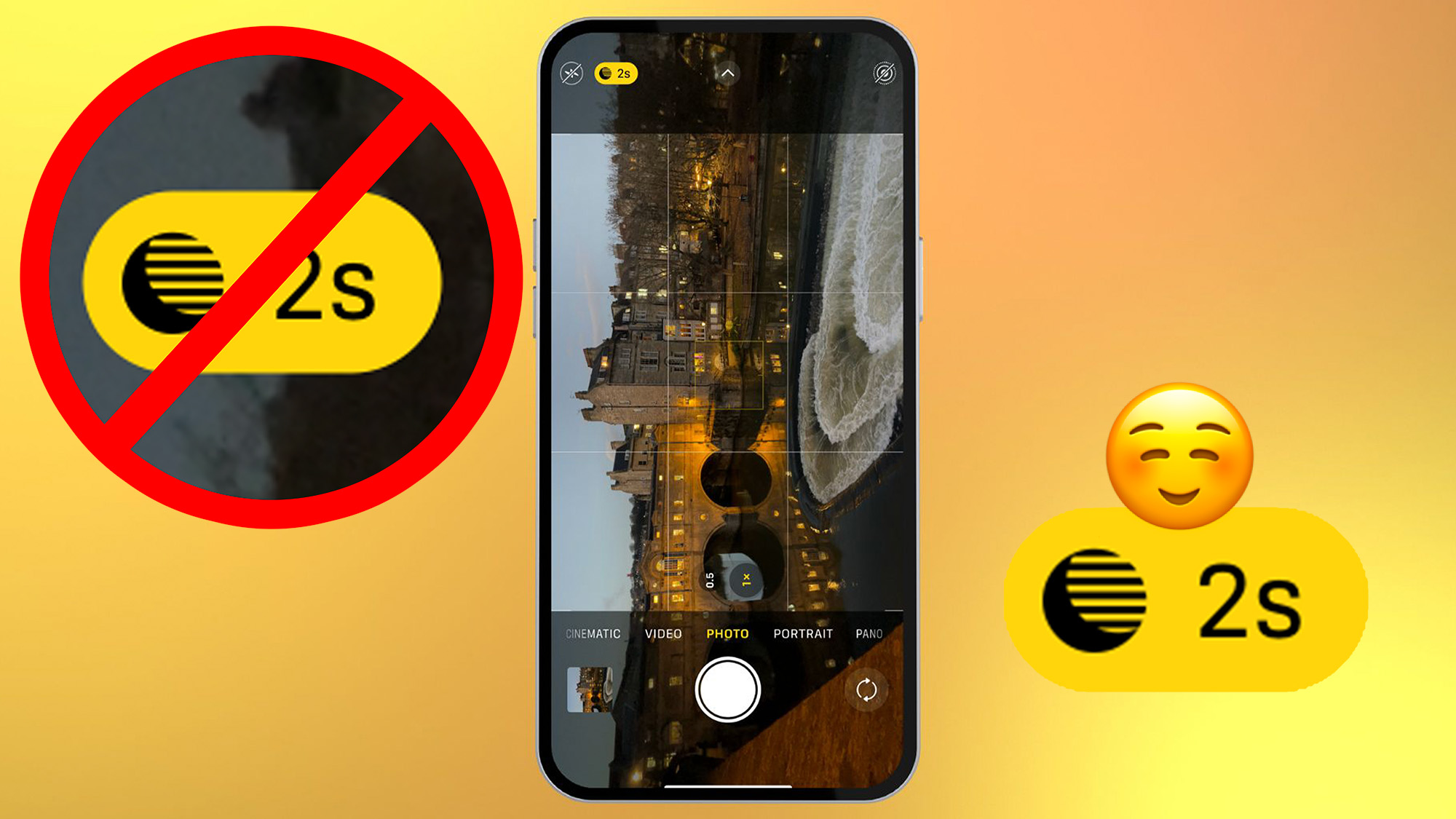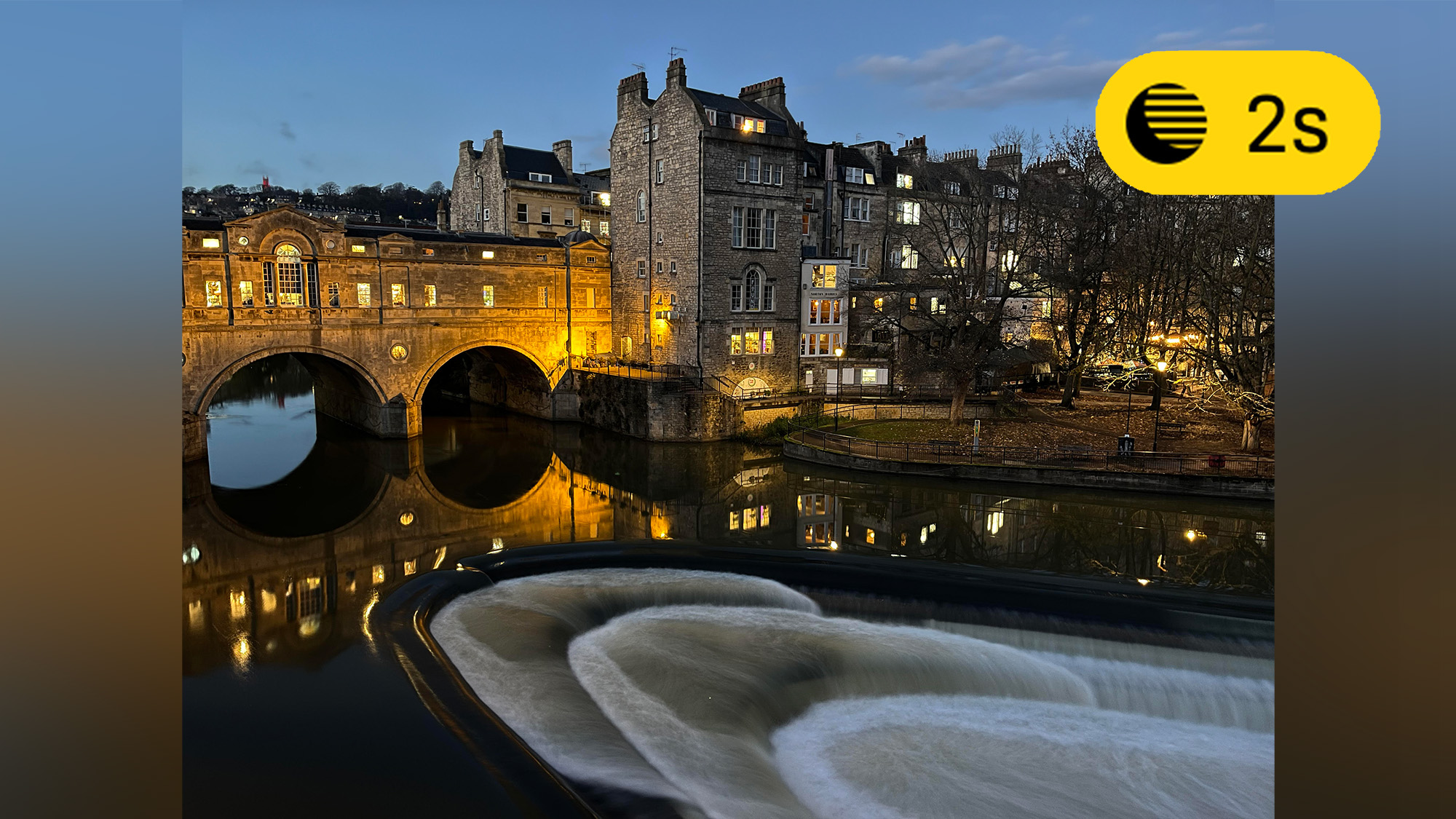Why do so many people hate the iPhone's night mode? Impressive engineering or an unnecessary gimmick?
Night mode has been an iPhone camera stalwart since the iPhone 11, but not everyone is a fan…

Ever woke up in a cold sweat because you dreamt your iPhone camera automatically switched to Night mode and you couldn’t turn the darn thing off? It seems you’re not alone. An X (formerly Twitter) user, gaming streamer, and self-confessed Knicks fan found himself at the center of an iPhone-photography debate, recently, following a seemingly innocuous Tweet about the iPhone’s Night mode. “Whoever added this to the iPhone camera needs to be killed,” said @funnysmartguy12, alongside a close-up of the dreaded yellow Night mode icon. Cue the post going viral and garnering 2.8 million views, 532 comments and counting.
And while I certainly don’t condone the tone of the Tweet – a bit of an overreaction would be an understatement… A quick flick through the comments revealed that people really do have a lot to say about Night mode. Most users seem to fall into one of three camps: Night mode is rubbish and shouldn’t exist at all. Night Mode is an iPhone Camera essential. Night mode has its place on the best iPhones, but it shouldn’t turn on automatically.
Most comments were in favor of Night mode to some degree, but while I think dismissing Night mode as useless is misguided, I can at least understand where the Night mode naysayers are coming from.
Whoever added this to the iPhone camera needs to be killed pic.twitter.com/7906LPgVyoMay 15, 2024
You see, we’re used to our iPhone camera doing exactly what we want, instantly. So when we’ve suddenly got to wait a few seconds to capture a photo, it’s not something we’re used to in 2024. We live in a world of milliseconds. We’re accustomed to swiping our way through TikTok, Instagram, and Bumble; enjoying lightning-fast 5G web speeds; and if we don’t like what we see, we tap or swipe and instantly move on to the next thing.
Heck, you may even feel like launching your precious iPhone 15 Pro Max out of the window, just because you’ve hit a cellular dead spot. Modern technology has conditioned us not to wait for anything. Night mode goes against everything iPhones stand for. It doesn’t just require you to wait, it forces you to awkwardly hold your iPhone still. And if that wasn’t enough, it requires anyone you’re photographing to resist moving, too.
This is where photography and smartphones can find themselves at odds. Many genres of photography are about persistence and patience. Carefully tweaking your composition and exposure to end up with an incredible shot. And low-light photography is the king of slowing everything down.
But to understand why Night mode is a necessary evil, you first need to know why low light presents such a challenge for your iPhone camera.
Master your iPhone in minutes
iMore offers spot-on advice and guidance from our team of experts, with decades of Apple device experience to lean on. Learn more with iMore!

I’m Deputy Editor of N-Photo: The Nikon Magazine, but moonlight as iMore’s go-to photography know-it-all. I’ve worked in the photo industry for over six years and have been an avid iPhone photographer since the iPhone 4. I firmly believe that iPhone photography is a great starting point for burgeoning photographers, so I’ve created a series of iPhone photography basics tutorials so you can either firm up your existing iPhone camera skills or embark on a whole new passion.
Why Does Night mode exist?
At its very core, digital photography is about exposing a camera’s sensor to light. When you take photographs during the day, you have an abundance of light, so your iPhone Camera is rarely challenged. But when you enter a dark room or the sun dips below the horizon, light is harder to come by. A traditional camera uses three settings to manage how much light hits its sensor: aperture, shutter speed, and ISO.
• Aperture: An opening inside a lens. The wider the opening, the more light is let in. While some apertures can be widened or narrowed, the apertures on iPhone lenses are fixed.
• Shutter speed: The length of time the sensor is exposed to light. The longer it’s exposed, the more light can reach the sensor. But expose an image for too long and any movement – from subjects or the camera itself – will create motion blur.
• ISO: The higher the ISO, the more sensitive the sensor is to light. But the more sensitive the sensor, the more visible a colorful grainy texture called noise will be in your images.
Your iPhone Camera balances these variables – with a little help from AI-powered computational photography – to produce images that are exposed correctly, and free from motion blur and noise. But when the light reduces, this becomes harder and harder, and eventually impossible.
Traditional photographers mitigate low light in a variety of ways. Firstly, larger sensors perform better in low light, delivering less noise at high ISOs. The best DSLR and mirrorless cameras boast full-frame sensors that are many times the size of your iPhone’s sensor. While specialist noise-reduction software can be used to reduce the presence of noise even further during the image-editing process. And that’s before you consider that many photographers spend thousands of dollars on top-quality lenses with super-wide apertures to let as much light into the camera as possible. Finally, if a static subject is being photographed, a tripod will be used to keep the camera perfectly still, so seconds or even minutes-long exposures can be captured while remaining sharp.
And herein lies Apple’s predicament. No iPhone can house a large 24 x 36mm full-frame sensor and keep that svelte form factor we know and love. Casual iPhone photographers capturing their friends sipping margaritas aren’t going to invest in and regularly use noise-reduction software. Despite having wide apertures on paper, iPhone Camera Modules are so tiny, that their minuscule lenses limit how much light can reach the sensor. And who wants to carry around a tripod on a night out?
Night mode was Apple’s answer…
How Night mode works and why you should use it?

Cupertino is famously tight-lipped when it comes to the inner workings of its tech, so I can’t be certain exactly how Night mode works. But while it’s often explained away as capturing a long exposure, that’s a rather simplistic conclusion. Night mode isn’t just gathering more light, it’s preventing motion blur and minimizing noise at the same time. It does this via Apple’s advanced AI-powered computational photography. Vodafone states that modern smartphones operating in low light, “shoot a series of pictures at different exposure levels, splice them together, and bring out as much detail as they can into a single picture.”
It would certainly appear that Night mode works less like a conventional long exposure and more like a high-dynamic-range (HDR) image. HDR photography is used to balance scenes with very bright and very darker features, such as the bright sun and dark, shadowy ground. If you capture a fast enough exposure to properly expose the bright sun, portions of the ground may darken to the point of becoming totally black.
"Whoever added Night mode to the iPhone camera needs to be applauded, commended, and celebrated."
If you capture a long enough exposure to expose for the dark ground, the sun may brighten to the point of becoming totally white. But, if you combine those two images, you end up with the properly exposed sun and ground. This would explain why Night mode captures such balanced exposures, even if you’re capturing both dark and light elements, such as city lights after dark.
So, looping back to @funnysmartguy12’s viral Tweet. Whoever added Night mode to the iPhone camera needs to be applauded, commended, and celebrated. Ultimately, Night mode exists so you can continue capturing well-exposed images on your iPhone Camera when there’s no longer enough light to use the default capture mode. And while holding your phone still and waiting a few seconds can be frustrating, the alternative is very often dark, blurry images with unsightly noise. And nobody wants that…
In fact, the timing of the post couldn’t have been better, because it coincided right around the time the Northern Lights were visible in the UK. Several commenters posted images they took of the aurora with their iPhones as proof of Night mode’s low-light capabilities.
And yet, Night mode isn’t perfect. There are times when it overcompensates and everything just looks a little bit too bright and washed out. Thankfully, Night mode isn’t the automatic nightmare some people think it is. So, if you want to learn how to use Night mode and harness its photographic powers, check out our iPhone Photography Basics guide.

Mike Harris is Deputy Editor for N-Photo: The Nikon Magazine, and brings with him over 10 years experience writing both freelance and for some of the biggest specialist publications. Prior to joining N-Photo Mike was the production editor for the content marketing team of Wex Photo Video, the UK’s largest online specialist photographic retailer, where he sharpened his skills in both the stills and videography spheres.
While he’s an avid motorsport photographer, his skills extend to every genre of photography – making him one of Digital Camera World’s top tutors for techniques on cameras, lenses, tripods, filters and other imaging equipment, as well as sharing his expertise on shooting everything from portraits and landscapes to abstracts and architecture to wildlife and, yes, fast things going around race tracks.
